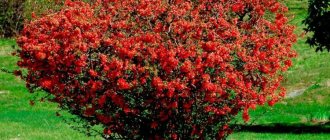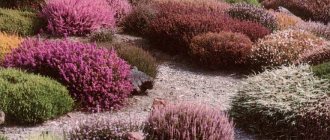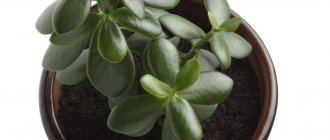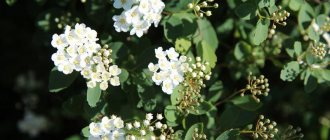In large garden areas you can often spot Japanese spirea. This slow-growing plant usually decorates large flower beds and flower beds. After all, the bush, according to the description, has very developed roots. In the photos provided, it is noticeable that it takes root equally well with both coniferous and deciduous plants.
Botanical description
A deciduous shrub, Japanese spirea (or meadowsweet), is valued by gardeners for its attractive inflorescences in the form of corymbs or panicles. This densely pubescent plant with erect shoots has simple leaves with serrated edges.
The branches of the hardy crop resemble spirals. In addition, it has the ability to adapt to almost any natural conditions. The inflorescences of Japanese spirea are located at the top of the stems, as well as along their entire length.
This plant is often decorated with:
- group and single compositions;
- curbs;
- hedges.
Shrub flowers are:
- pinkish;
- scarlet;
- snow-white.
Japanese spirea:
- not afraid of diseases and air pollution;
- easily tolerates heat and moderate frosts;
- does not require regular replanting and digging.
With proper care, a durable honey plant can live for almost 40 years. In the varietal diversity of Japanese spirea, both ground cover species and giants up to 2 m are known. And some of its hybrids can bloom twice a year.
The advantages of Japanese spirea include:
- instantly restored crown;
- rapid growth and adaptation to pruning;
- flowering under any conditions;
- attractive flowers and leaves;
- a varied shade palette;
- long lasting and delicate fragrance of flowers.
general information
Spiraea got its name from its shoots that are surprisingly flexible for a shrub, because from ancient Greek this word literally translates as “bend.” People call the popular ornamental shrub meadowsweet, so it’s likely that you know it by this name.
Spiraea combines truly vital features for our latitudes. It is at the same time very unpretentious, resistant to severe frosts and blooms for a long time even on the hottest days.
There are dwarf spireas that barely stretch up to 20 cm and are well suited for rockeries. But there are also full-fledged tall shrubs 1-1.5, or even up to 2.5 m. The meadowsweet bark has an interesting natural feature - it can peel off. This is its natural life cycle, which periodically frightens inexperienced gardeners.
All spireas have shallow and superficial, but very developed fibrous roots. The branches and leaves can be of completely different types, but the flowers are often similar. They are small, but there are a lot of them, and they are always collected in large lush inflorescences. Shades range from snow-white to rich dark pink.
Popular types and varieties
Japanese meadowsweet, which has almost 100 varieties and species varieties, is divided into:
- pyramidal;
- spherical;
- cascade;
- weeping;
- creeping;
- erect.
You can learn more about the characteristics of the varieties from the table below:
| Species name | Main characteristics |
| Shirobana | Medium height, with a height of 80 cm; 1 bush can have inflorescences with different shades. |
| Crispa | Globular and low-growing, with cream-colored flowers; the hybrid is usually used on alpine hills and borders. |
| Goldflame | Fast-growing, with a length of up to 1 m; often found in city squares; known for its reddish foliage. |
| Little Princess | Does not grow in height above 0.8 m; the crown is compact and round, with pink inflorescences and lush green foliage. |
| Golden Princess | Dwarf shrubs (up to 0.5 m) with lemon-colored leaves and creamy flowers. |
| Magic Carpet | The crown is cushion-shaped and groundcover, with lush scarlet foliage, which eventually changes to fiery, and lilac-pink flowering. |
| Anthony Waterer | Grows up to 0.8 m; the leaves are initially reddish, turning green with age; inflorescences are creamy-lilac with a red tint. |
| Alpina | Low, with dense branches and striped shoots of a round shape; blooms light pink. |
| Albiflora | A dwarf and slow-growing hybrid with a dense round crown; white flowers; The leaves are light green, turning yellow in autumn. |
| Microphylla | It grows up to 1.3 m, has pink inflorescences and large wrinkled leaves that change color 3 times. |
| Dwarf | A miniature variety with small foliage and cream-colored flowers in the form of scutes. |
| Fairlight | Red-scarlet foliage; flowers are pinkish. |
| Frobelli | The crown is spherical; branches, bright pink flowers; Purple foliage in spring and fall turns green in summer. |
| Genpei | Height up to 0.8 m; branches are brown-scarlet; lush green foliage; inflorescences with different shades. |
| Gold Mound | Dwarf hybrid growing up to 0.3 m. |
| Darts Red | Similar to Little Princess, but its acidic purple flowers are in delicate cream buds. |
| Candlelight | A compact variety, sometimes reaching up to 0.5 m in height, with lemon-colored leaves and pinkish inflorescences. |
| Arguta | When growing, it reaches up to 2 m; umbrella inflorescences are small and white; the crown is lush and large; emerald foliage. |
| oak leaf | The length sometimes reaches up to 1.5 m, a round and lush crown, sharp foliage and snow-white inflorescences in the form of scutes. |
| Wangutta | Grows up to 2 m; emerald foliage; hemispherical snow-white flowers. |
| Willow | Reaches up to 2 m in length; straight shoots with ribs; long and sharp leaves of emerald color; creamy inflorescences resembling cylindrical panicles. |
| Gray (Bride); subspecies: Graciosa and Grefsheim | Grows up to 1.8 m, lance-shaped emerald foliage and small white inflorescences resembling corymbs. |
Japanese spirea (its photo and description will be of interest to any gardener or summer resident) is quite popular in garden and park design. This ornamental shrub has several varieties with different properties. The plant is a subspecies of the rose family.
Arguta can be drought- and frost-resistant. It must be pruned immediately after flowering. This variety is good in hedges. Willow spirea can be planted in cold climates.
Vangutta, which goes well with conifers and lilacs, has 3 breeding types:
- Snow white;
- Renaissance;
- Pink Ice.
It is customary to supplement the bride in living fences with other spirea:
- Billard;
- Willow;
- oak leaf.
Japanese spirea: types
In addition to all the above types of meadowsweet, the following plant varieties are also found in nature:
- Gold and greens;
- Double play of gold;
- Ruberrima;
- Big band double play;
- Nana;
- Pink gold;
- Bullata;
- Sandrop;
- Neon flash;
- Golden Elf;
- Double play artist;
- Manon;
- Pink parasol.
Proper crop pruning
When organizing proper care, it is worth remembering to prune Shirobana spirea in the spring, which allows you to maintain the beautiful appearance and shape of the bush. Absolutely all varieties of the crop, including the famous Jenpei, tolerate haircuts very well. However, it is worth understanding how to prune correctly, since the flowering of the plant depends on this.
This simple procedure allows you to give the desired shape to a plant or trim a bush that is too large. But don’t forget about the mandatory annual pruning in early spring. This simple sanitary procedure is carried out before the leaves appear. The shoots are cut to the buds. Weak and lifeless branches are removed completely.
Don't be afraid to damage the bush. The more old shoots you remove, the more new ones will grow. Young shoots will make the plant strong and beautiful. After four years from the moment of planting, the bushes need annual anti-aging pruning. In this case, the plant is radically cut, leaving shoots no more than thirty centimeters. If after such a procedure the bush does not recover and remains weak and unsightly, then it is recommended to replace it with a new one.
Perhaps such measures may seem too harsh to some. But in fact, trimming plants is justified. If it is not done on time, the bush will not be able to maintain its attractive round shape. And after a while it will completely lose its appearance, as heavy old shoots begin to fall to the ground.
Pruning must be accompanied by watering with a solution of manure with superphosphate (fertilizer is applied at the rate of 10 grams per 10 liters of water). The mixture is poured under the roots of the bush.
Application in landscape design
Japanese spirea usually:
- knocking out lilac bushes;
- decorate cottages and gardens;
- complemented by rockeries and mixborders;
- zone areas;
- decorate hedges and borders;
- highlight the beauty of other cultures.
Japanese spirea - photo in the border
The following varieties are suitable for forming borders:
- Bullata;
- Crispa;
- Golden Princess;
- Shirobana;
- Little Princess.
Spiraea turned out to be excellent tapeworms:
- Wangutta;
- Douglas;
- Arguta;
- plum-leaved;
- Gray;
- Nipponian.
Japanese spirea - photo in a flowerbed
To create hedges, the following plant varieties are used:
- Grefsheim;
- Middle Meadowsweet;
- Wanguttu;
- Boumalda;
- Densiflora;
- Frobelli;
- Argut.
Looks great in flower beds:
- Gold Mound;
- Shirobana;
- Golden Princess;
- Candlelight.
Japanese spirea, photos and descriptions follow, is compact and has dense flowering. For its full development, optimal conditions are needed. Otherwise, the plant practically stops developing and blooming.
Features of plant propagation
Spiraea is increased in quantity using vegetative and generative methods. But for plant hybrids, cuttings and breeding are more suitable. Only with such methods the results of reproduction are immediate and successful.
By layering
To obtain an autumn single layer with good roots, in March the lower shoots are pressed to the ground in which a trench has been dug. In this position, the shoot is fixed, leaving only its top above the ground. In the fall, the resulting layerings are transplanted to another place. To create several seedlings, simply pinch the top of the shoot.
Cuttings
Spiraea cuttings take root by 70% without the use of stimulants. They are usually rooted in September-October, selecting the strongest shoots from the parent plant. Before planting, the prepared cuttings are left in water for 3 hours, and then their cuts are pollinated with a root-stimulating agent.
Japanese spirea - cuttings
Next, the shoots are planted 2 cm deep in the substrate and covered with glass or plastic, after which they are placed in the shade. Rooting cuttings are constantly watered and sprayed. They are dug up in late autumn. Next, the cuttings with shoots are covered with leaves and an inverted wooden box is placed on it.
Seeds
Seed propagation of Japanese shrubs is considered the longest method. But with its help, planting material is sown without stratification. Containers or boxes are used for planting. The sown seeds are not covered and, after covering with glass or film, are placed in the shade, in the east or west of the garden.
After seedlings emerge, the containers are opened. And when the seedlings grow to 2 cm, they are picked by pinching. The seedlings are watered and left in the shade until autumn. With the onset of this period, they are moved to a test bed, and a year later the seedlings are planted permanently.
Japanese spirea, its photo and description are provided in this text, loves fertile and moist soil. Some of its varieties bloom in spring, while others bloom in summer. The plant can remain in the same place for up to 15 years.
Dividing the bush
The method of bush division of spirea for propagation is used in August-September. The necessary part of the plant, which is already 3-4 years old, is cut off with a shovel. At the same time, strong roots and stems are removed.
Then the bush, dug out and divided into 2-3 parts, is planted in prepared recesses with crushed coal at the bottom. Next, the seedlings are covered with soil and compacted. After this they can be watered.
Growing conditions
Let's find out what requirements the Japanese spirea makes for the conditions of its maintenance and location.
Selecting a location
Although the plant is unpretentious, it will best demonstrate its decorative qualities when planted in a sunny, well-lit area. By the way, spirea can feel quite good in the shady corners of the garden, however, in this case it will not be particularly decorative: the inflorescences will be smaller and the color of the foliage will not be so bright.
It is also important to know that the space allocated for spirea must be quite large, since the roots of the plant grow underground over an area larger than the area of the shrub itself.
The soil
Japanese spirea will feel best in fertile, well-fertilized soil. Take care of this before planting by adding the necessary nutrients to the soil.
Planting time and seedling selection
Spiraea should be planted in open ground in the spring. However, it is necessary to have time to plant before the leaves bloom on the plant. Purchase seedlings from trusted nurseries, paying attention to the roots of the plant: it is important that they are not overdried. Otherwise, the spirea will not take root. When purchasing seedlings with bare roots, choose specimens with live buds, but not yet starting to grow. Bend the roots and shoots (without fanaticism) - they should be flexible and not brittle.
Preparing for landing
If the plant has damaged roots, remove them with sharp, well-disinfected pruners. If some healthy roots are too long, shorten them too.
Before planting, soak the roots of the plant in water with potassium permanganate. The procedure will simultaneously solve two problems: it will relieve the roots from drying out and ensure disinfection.
Rules of care
The care requirements for spirea are minimal and simple. But to achieve maximum and successful results, several nuances should be taken into account.
Varieties of the Japanese plant, thanks to its characteristics, take root well:
- in outskirts of Moscow;
- in Siberia;
- in the Urals.
Rules and terms of landing
Shrubs are planted both in spring and autumn. It will require holes with a depth and diameter of 40-50 cm.
Drainage from:
- crushed bricks;
- crushed stone;
- fine gravel.
The depressions are then filled with fertile soil with the same amount:
- leaf soil;
- sand;
- humus or compost.
When planting spirea, the planting hole should be fertilized.
Then the following is added to the planting holes:
- 15 g potassium sulfate;
- 1 tbsp. dolomite flour (only if the soil is acidic);
- 20 g double superphosphate;
- 3 liters of wood ash.
Spiraea bushes are planted at a distance of 50-70 cm from each other. The roots of the seedling removed from the container are well watered and untangled. Then the plant is moved into the hole and covered with soil. After thorough compaction, the spirea is again well moistened.
Site selection and soil preparation
For planting, choose sunny areas so that they subsequently bloom profusely. Spirea does not have any exceptional soil requirements. She is able to take root in any soil.
Only some plant hybrids love fertile and moist soil. The planting soil, before moving the shrubs into it, is carefully weeded and mixed with treated compost.
Watering
Drought-resistant spirea is watered generously at a time so that the water penetrates deeply to the roots through the hardened soil.
Drip irrigation through a plastic bottle
It is better to moisten seedlings using the drip method, since sprinkling is very harmful to young plants. This causes them to become infected with fungi. Adult spirea are watered only during the summer heat.
Top dressing
It is customary to fertilize Japanese shrubs with organic fertilizers in the spring and autumn. In summer, spirea is enriched with mineral mixtures. Young plants are fertilized with organic matter from March to June. Bushes that are already 2 years old, during the release of inflorescences, are additionally fed with complex supplements with potassium and phosphorus.
Loosening and mulching
The circles under the spirea trunks must be loosened after:
- weeding;
- tamping;
- glaze.
The soil under the plant is constantly mulched with a peat layer 7-10 cm thick. The material is placed 15 cm from the roots.
Instead of peat you can use:
- wood chips;
- pine needles;
- crushed leaves.
Peat is perfect for mulching
. Mulching:
- enriches the plant with useful substances;
- protects the lower leaves from getting soil on them;
- cools the soil in summer;
- gets rid of weeds;
- prevents moisture evaporation.
Trimming
It is believed that cutting Japanese spirea:
- strengthens roots;
- promotes abundant flowering and splendor of the plant;
- stimulates the creation of young shoots;
- makes the bushes even more decorative;
- protects against pests and diseases;
- rejuvenates and heals the culture.
Spirea pruning is carried out during its growing season, from March to October. Plants that bloom in spring are trimmed until May, removing dry branches and shortening frozen shoots. Dried inflorescences of such species are cut off before June.
Japanese spirea - pruning
Bushes that bloom in summer are treated until early August. All spirea, regardless of their varieties, are pruned for rejuvenation in early spring or autumn, before the first frost (15-20 days before them). Sanitary cutting of spirea is carried out before its bud swelling. In winter, pruning is not performed.
In addition to rejuvenating and sanitary haircuts, there are also:
- moderate:
- cardinal;
- formative;
- stimulating.
Japanese spirea (photos and descriptions give a complete picture of this plant) does not tolerate drought and severe frosts (below -25°). The bushes of the crop must be constantly fed and protected from the cold in winter. To do this, they are mulched and covered in the fall, collecting the tops of the plants in loose bunches.
Planting Japanese spirea
Japanese spirea is planted in the autumn months or early spring, until the buds open. The difference is that it is recommended to plant spring-flowering varieties in the fall. In early spring, you can plant a variety that blooms in summer.
One of the most spectacular spring flowering spireas, Spiraea Snowmund. Thanks to the abundance of pure white flowers, the grace of thin arched branches makes a charming impression both up close and at a distance.
Rich pink hue of small flowers of the Japanese spirea variety Froebelii.
Resistance to diseases and pests
Continuous control of insects and diseases of spirea increases its resistance to these problems.
Treating spirea with soapy water helps get rid of fungi
Despite the shrub’s strong immunity and its easy tolerance to diseases, this plant is sometimes affected by:
1. Fungi.
They are usually treated:
- laundry soap;
- foundationazole;
- copper sulfate;
- phytospirin;
- Bordeaux mixture;
- ditan.
2. Pests such as:
- sawfly;
- leaf roller;
- whitefly
You can get rid of them using:
- laundry soap;
- fitoverma;
- copper sulfate;
- Denisa pro;
- ash.
3. Spider mites, which are destroyed:
- Keltan;
- phosphamide;
- infusion of ash;
- metaphos;
- fozalon.
4. Aphids that die from:
- kronefosa;
- garlic-manganese tincture;
- actellica;
- fozalona.
Combination with other plants
In flower beds and flower beds, Japanese spirea is well complemented by:
- low growing plants;
- daylilies;
- lupins;
- delphiniums.
For pubescence of plantings, spirea is combined with:
- barberry;
- coniferous;
- ornamental plants.
Japanese meadowsweet and low-growing varieties of hydrangea (tree or paniculate) are combined for:
- decoration of green lawns;
- formation of bright mixborders and hedges;
- creating attractive flower beds.
Low-growing hostas can be planted as borders along with spirea. And a tandem with weigela will lead to the simultaneous flowering of both crops.
Gray spirea is often combined with low-growing bushes:
- carnation;
- peonies;
- roses
A Japanese shrub called spirea successfully complements compositions with other plants. That's why landscape designers love him so much. From the description of the plant it becomes clear that it is quite unpretentious.
In the photo with the bush you can see all the beauty and splendor of this culture. Japanese red maples will look good next to yellow-leaved spirea varieties.
Plants with white inflorescences are often combined with:
- broom;
- lilac;
- viburnum
Among the conifers that are suitable for proximity to spirea:
- thuja;
- ate;
- junipers.
Together with spirea, the following will harmoniously fit into mixborders:
- variegated euonymus;
- skumpii;
- red-leaved barberries;
- action;
- weigela;
- forsythia;
- loosestrife;
- boxwood
The following look interesting next to Japanese meadowsweet:
- linden;
- birch;
- maples;
- rowan;
- poplars;
- ash trees;
- fruit trees.
In flower beds, herbaceous and cereal plants combine well with spirea:
- fescue;
- miscanthus;
- pearl barley;
- feather grass;
- reed grass;
- Felicia;
- petunias;
- nigella;
- forget-me-nots;
- phlox;
- viols;
- aconites;
- alliums;
- sedums;
- periwinkles;
- scillas;
- tulips;
- primrose;
- irises;
- daffodils.
How to beautifully plant gladioli flowers in the garden (with photo)
In any landscape design, flowers must be used as one of the main decorative elements. They have bright colors, long flowering periods and fill the air with a pleasant fragrance. Thanks to these properties, flowers can be planted in almost any area. Special places are allocated for flower beds, which can be located in front of the house, along fences and paths, near ponds, or they are laid out against the background of a lawn. You can create a flower garden of any size and shape, it all depends on the size of the plot and the imagination of its owner. If you choose the right flowers and place them in the flower garden, they can delight the eye with their blooms from early spring to late autumn.
There are two types of flowers: annual and perennial. Sometimes flowers from different groups are grown in one flower garden. Before you start creating a flower garden, you need to think about how it will fit in with the rest of the landscape design elements.
When choosing a location for a flower garden, several factors must be taken into account.
First you need to select the main vantage points from where the flower garden will be clearly visible. Such points include the entrance to the site, house windows, gazebos, paths, garden benches. You can plant a flower garden in such a place that it can be seen from almost anywhere on the site. But at the same time, it is necessary to ensure that the magnificent flower garden does not block the rest of the picturesque corners of the garden.
Next, you need to decide what type of flower garden you are going to create in each specific area of the site. Each species has a specific purpose, which determines the location of the planting, as well as the choice of plants for the flower garden.
Gladioli are the most beautiful in group plantings. In flower beds they are usually planted in the background or in the center. Lower plants are planted in front of them to hide the soil and lower part. Often these flowers are planted along fences, which serve as a background and support for them.
Look how beautiful the gladioli flowers are in the garden in these photos:
Gladioli are combined with lower Houston ageratum, marigolds, phlox, and dahlias. Flower beds in which gladioli grow next to plants that have silvery leaves, such as wormwood, look beautiful.
Preparing for winter
Beautiful spireas are in great need of winter preparation, even though almost all of them are frost-resistant.
Sheltering spirea bushes for the winter
In autumn such bushes:
- subjected to anti-aging or sanitary pruning;
- watered;
- weed;
- loosen;
- fertilize;
- mulch;
- cover with branches and leaves if a winter without snow is expected.
In dry autumn, each Japanese meadowsweet bush is watered with 15 liters of water. During the rainy season, the plant is not moistened, but loosened. After this, the tree trunk areas are mulched with straw or a peat-leaf mixture. Before pre-winter pruning, the bushes are inspected for the presence of cobwebs. If there is one, then it is removed. After this, the plant is sprayed with an anti-spider mite agent.
In autumn, spirea is not allowed:
- water just before the shelter;
- fertilize with nitrogen;
- prune earlier or later than recommended;
- litter with plant debris (they are usually burned away from the plant);
- cover with polyethylene or roofing felt;
- heavily moisturize.
Rules for caring for Japanese spirea
Japanese meadowsweet will be saved from winter damping under cover:
- mulching with dry leaves (with a layer of up to 30 cm), which are additionally pressed down with branches;
- bending down to the ground and fixing plant branches in this position;
- collecting shoots together and tying them with twine or rope.
To preserve the crown, the plant collected in a bunch is covered before winter:
- white polypropylene material;
- geotextile;
- burlap;
- lutrasil.
Lush and elegant Japanese spirea bushes look spectacular on green lawns and hedges. This is especially well expressed in the photo with the plant. Decorative characteristics and descriptions of the culture delight and inspire beginners and gardening professionals. And the incomparable flowers of this unpretentious shrub attract attention all spring and summer.
Watering
Due to its shallow root system, spirea does not tolerate drought well, so during the dry season it needs moderate watering: twice a month for each bush, 15 liters of water. The plant also needs plenty of watering after pruning.
Japanese spirea and azalea in a garden with an Asian flavor
Due to the beautiful color of the leaves, miniature varieties of spirea are also popular for creating bonsai.











